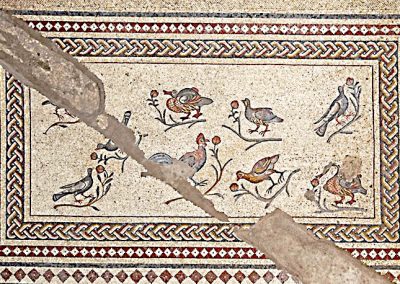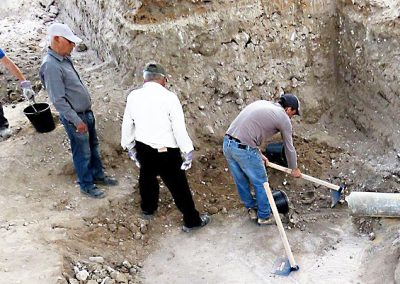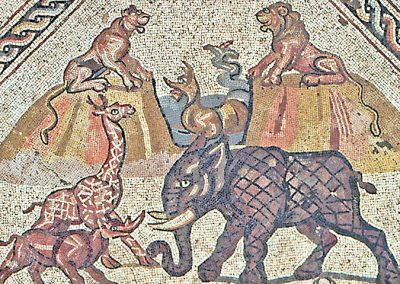
Bible, History, Archaeology
Bible,
History,
Archaeology
A mosaic in Lod, Israel
Contents:
Introduction – Description – Who were the occupants? – A new discovery – An image of the mosaic – Image gallery

Image opposite: an archaeologist prepares the mosaic for «ungluing» and transferring it for exhibition. Israel Antiquities Authority, Niki Davidov, Assaf Peretz.
Remarkably well-preserved and beautifully crafted, this mosaic, composed of tesserae of marble and limestone or colored glass paste, adorned the floor of a Roman house dating from the Byzantine period (circa 300 AD). Measuring 17 m long by 9 m wide, it most likely decorated the room used for receptions, meals and entertainment. The brick and earthen walls of the vast, fresco-covered dwelling whose remains were found had collapsed, preserving the mosaic. The excavations also uncovered pottery and coins from the 3rd and 4th centuries.
Description
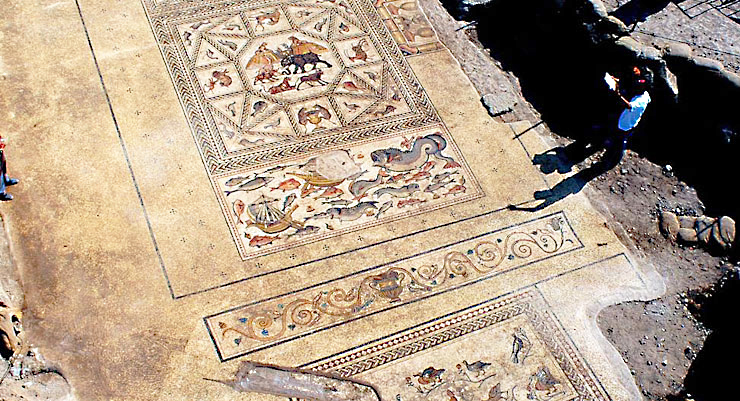
image opposite: a general view of the famous Lod mosaic discovered in 1996. Israel Antiquities Authority, Niki Davidov, Assaf Peretz.
On either side of the central mosaic are two smaller rectangular panels. The northern one illustrates the same animal theme, while the southern one is dedicated to a marine scene. Two merchant ships are seen sailing amidst fish, dolphins and shellfish, one with sails up and the other without.
Unlike other mosaics from the same period, this mosaic is unique in that it contains no human representations or symbols of Greek or Roman divinities.
Who were the occupants?
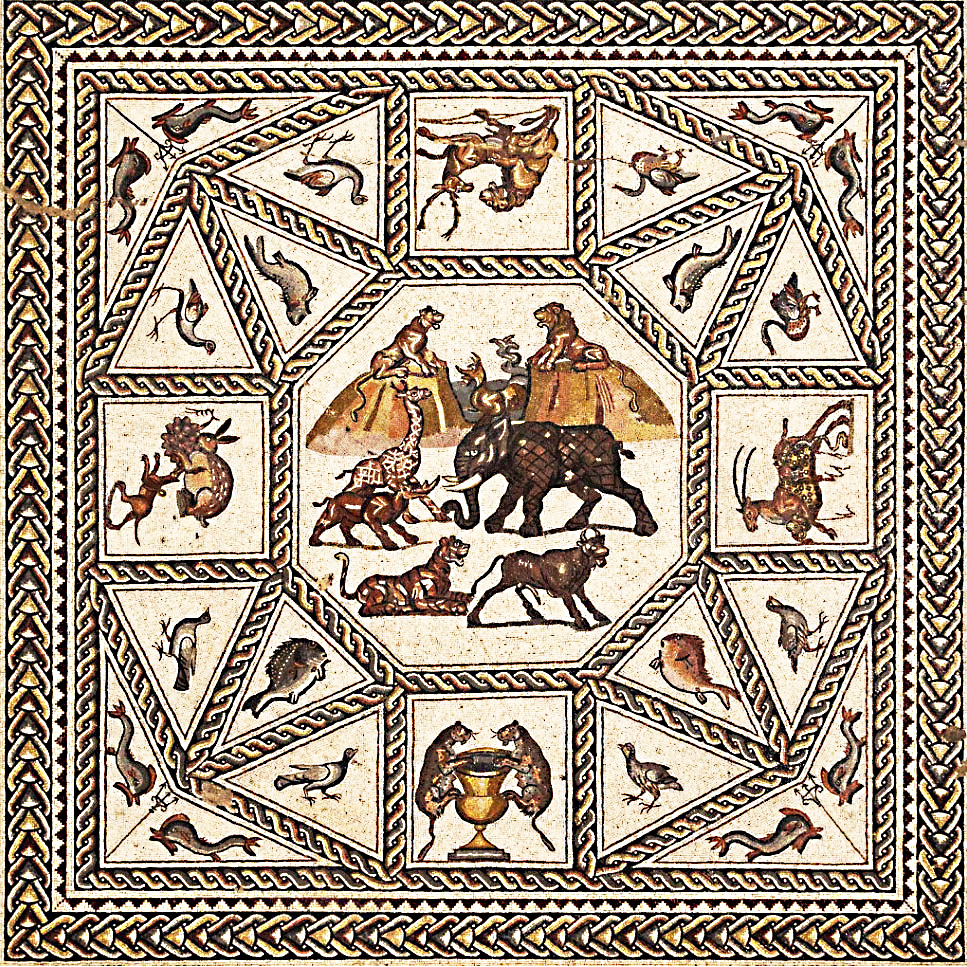
Lod, some 15 km from Tel Aviv, is the ancient city of Lydda, destroyed by the Romans in 66 A.D. during the First Jewish War. Re-founded by Hadrian, it became a Roman colony under Septimius Severus in 200 A.D.; it became a Christian city in the Byzantine Empire before being conquered by the Arabs (around 636?).
Image opposite: a detailed view of the mosaic. Israel Antiquities Authority, Niki Davidov, Assaf Peretz.
A new discovery
In 2015, archaeologists discovered another mosaic, which will also be displayed in the new museum. IAA archaeologist Dr. Amir Gorzalczany, director of this phase of excavations, said the latest find provided further evidence of the luxurious lifestyle that prevailed in Roman times :
«Excavations at the site uncovered a villa comprising a large reception room triclinium paved with luxurious mosaics and a columned inner courtyard, also with mosaics, and a water supply system, we found evidence of the Mediterranean luxury that characterized the Roman Empire, including attributes such as fresco murals.»
The mosaic was uncovered under two meters of earth during the construction of a freeway between Jerusalem and Tel Aviv. It decorated the floor of a residence in the ancient Roman city of Lydda, probably in a reception room.. Israel Antiquities Authorithy/Nicky Davidov.
A view of the famous Lod mosaic (Detail).Niki Davidov. Israel Antiquities Authority.
A view of the famous Lod mosaic (Detail).
A view of the famous Lod mosaic (Detail).Israel Antiquities Authority, Niki Davidov, Assaf Peretz.
A view of the famous Lod mosaic (Detail).
A general view of the archaeological excavation site.Israel Antiquities Authority, Niki Davidov, Assaf Peretz.
A general view of the archaeological excavation site.


